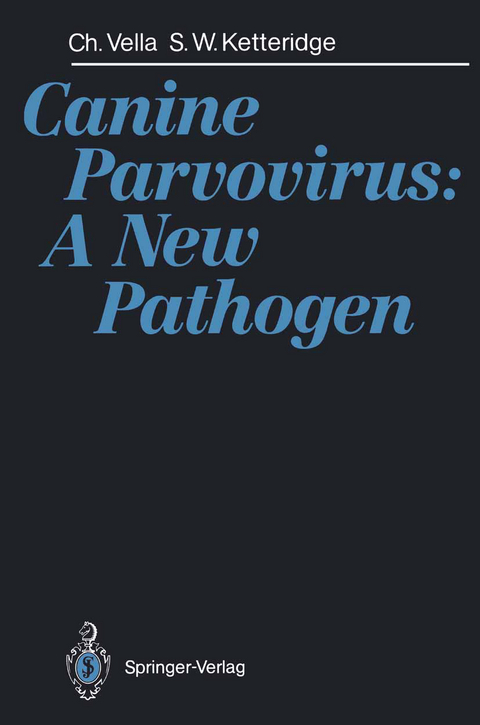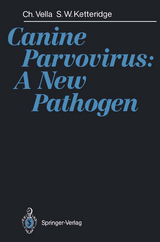Canine Parvovirus: A New Pathogen
Seiten
1991
Springer Berlin (Verlag)
978-3-540-54314-5 (ISBN)
Springer Berlin (Verlag)
978-3-540-54314-5 (ISBN)
Canine parvovirus (CPV), a new virus of the Canidae firstappeared during the 1970s, but disease caused by this viruswas not reported until 1978. Then within a few months thevirus crossed national and continental boundaries causinghigh fatality in domestic dog populations. A similar patternof transmission was seen in sylvatic canines but infectionwas largely subclinical. Between 1979 and 1981 CPV wasreplaced worldwide by an antigenic variant designatedCPV-2a. The epidemiological advantage of this variant overCPV is not understood.CPV is a new pathogen of dogs that has attracted animpressive body of research. However aspects of the biologyof this virus remain unclear, not least of which is thequestionof its possible origin. This book presents an up todate and comprehensive review of the natural history of CPVand its control by prophylactic vaccination. Particularattention is paid to the techniques used to examine therelationship between CPV and other parvoviruses. CPV isthought to be a variant of the virulent cat virus FPV(feline parvovirus) and at least one other variant is knownMEV (mink enteritis virus). Theories on the genesis of CPVare discussed. An attempt to correlate the evidence and anhypothetical mechanism by which such a variant could havebeen selected is offered. This hypothesis is complemented byserological evidenceof CPV seroconversion in clinicallynormal dogs some years prior to the virulent pandemic.Many animal parvoviruses are known and in 1989/1990, no lessthan 6 new viruses were described. CPV may have arisen froman FPV vaccine strain. The use of modified live vaccines forthe control of these viruses is questioned and alternativestrategies discussed.A consise chapter on human parvoviruses describes the everincreasing role of B19 in human disease, including that ofan opportunistic pathogen in AIDS patients.
1 Introduction.- 1.1 Historical Background.- 1.2 Virological Considerations.- 2 Canine Parvovirus Disease Syndromes.- 2.1 Canine Parvovirus-Induced Myocarditis.- 2.2 Canine Parvovirus Enteric Disease.- 2.3 Confirmation of Canine Parvovirus Infection.- 3 Transmission.- 4 Vaccination Strategies.- 4.1 Vaccination Failure I.- 4.2 Homologous Canine Parvovirus Vaccines.- 4.3 Vaccination Failure II.- 4.4 Current Problems with Vaccination.- 5 Origins of Canine Parvovirus.- 5.1 Comparisons of Canine Parvovirus with Known Related Parvoviruses.- 5.2 Theories and Ideas on the Origins of Canine Parvovirus.- 6 Parvoviruses and Human Disease.- 7 Prospects and Problems.- References.
| Erscheint lt. Verlag | 30.8.1991 |
|---|---|
| Zusatzinfo | VI, 58 p. 1 illus. |
| Verlagsort | Berlin |
| Sprache | englisch |
| Maße | 155 x 235 mm |
| Gewicht | 140 g |
| Themenwelt | Medizin / Pharmazie ► Medizinische Fachgebiete ► Dermatologie |
| Medizin / Pharmazie ► Medizinische Fachgebiete ► Mikrobiologie / Infektologie / Reisemedizin | |
| Naturwissenschaften ► Biologie ► Mikrobiologie / Immunologie | |
| Naturwissenschaften ► Biologie ► Zellbiologie | |
| Naturwissenschaften ► Biologie ► Zoologie | |
| Veterinärmedizin ► Kleintier | |
| Schlagworte | AIDS • Antigen • Darminfektion • Enteric Disease • Epidemiologie • epidemiology • Myocarditis • Myokarderkrankung • Parvovirus • Viruses |
| ISBN-10 | 3-540-54314-7 / 3540543147 |
| ISBN-13 | 978-3-540-54314-5 / 9783540543145 |
| Zustand | Neuware |
| Haben Sie eine Frage zum Produkt? |
Mehr entdecken
aus dem Bereich
aus dem Bereich
Differentialdiagnostik und Therapie bei Kindern und Jugendlichen
Buch (2022)
Thieme (Verlag)
CHF 191,00
Allergene - Diagnostik - Therapie
Buch (2022)
Thieme (Verlag)
CHF 249,00
richtig verschreiben – individuell therapieren
Buch (2023)
Thieme (Verlag)
CHF 99,40




